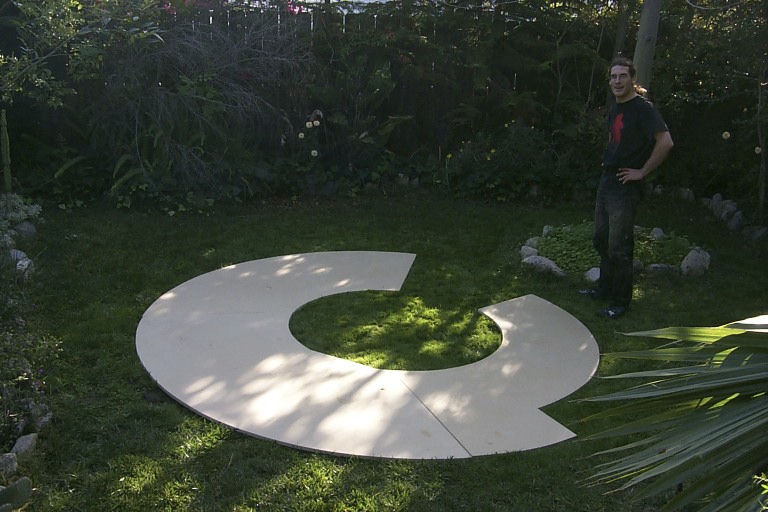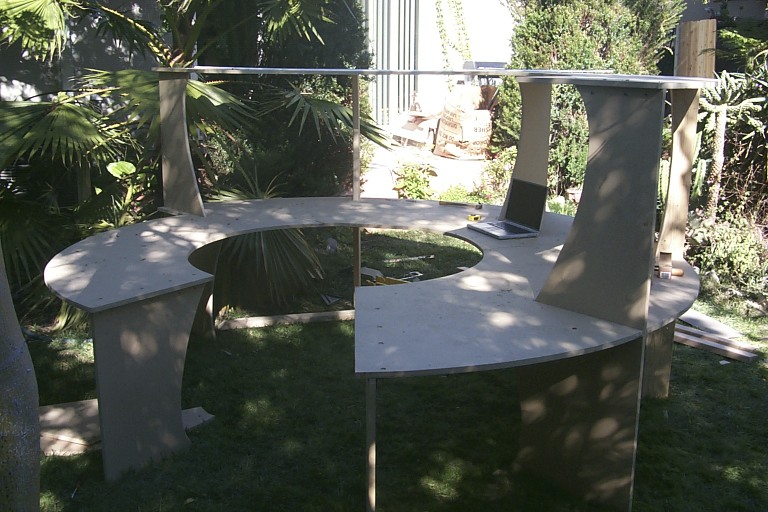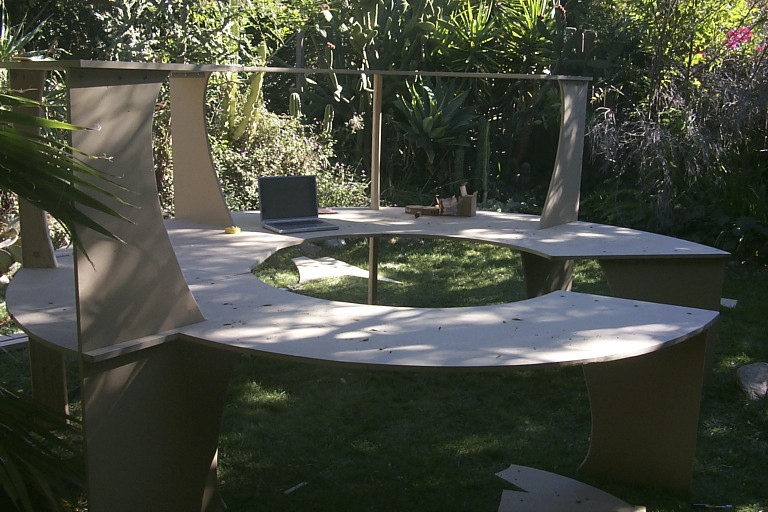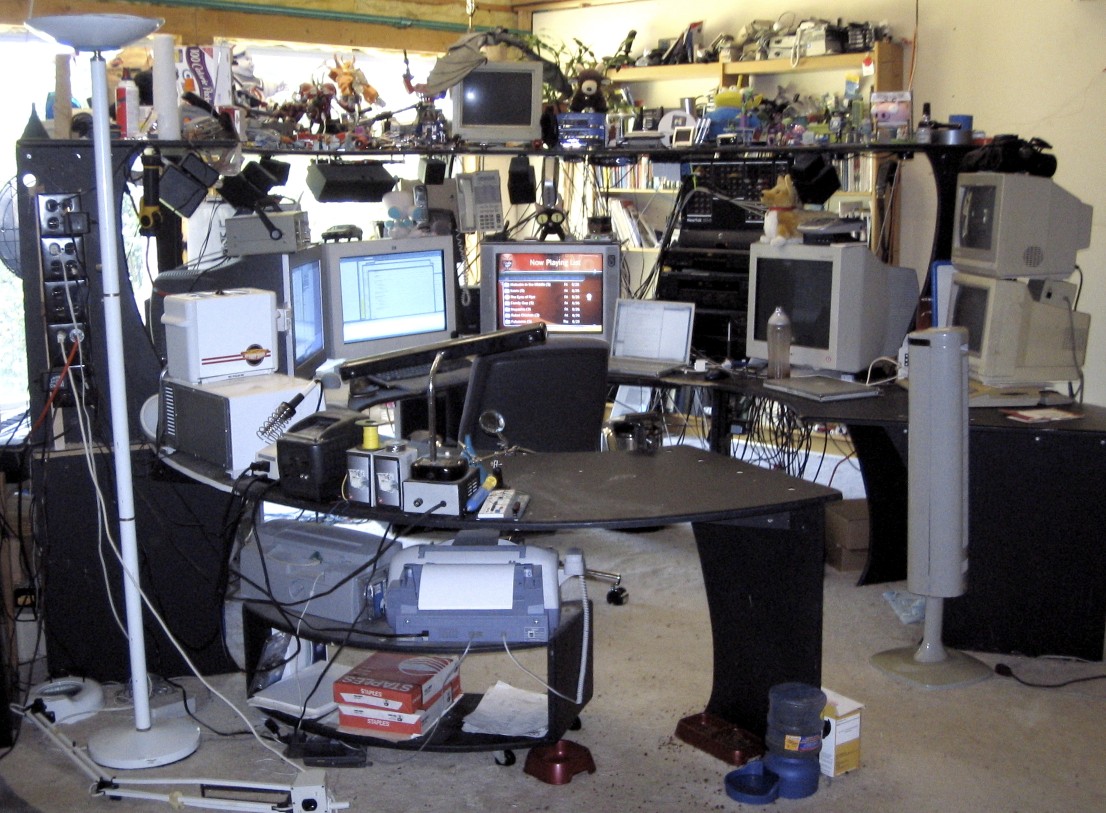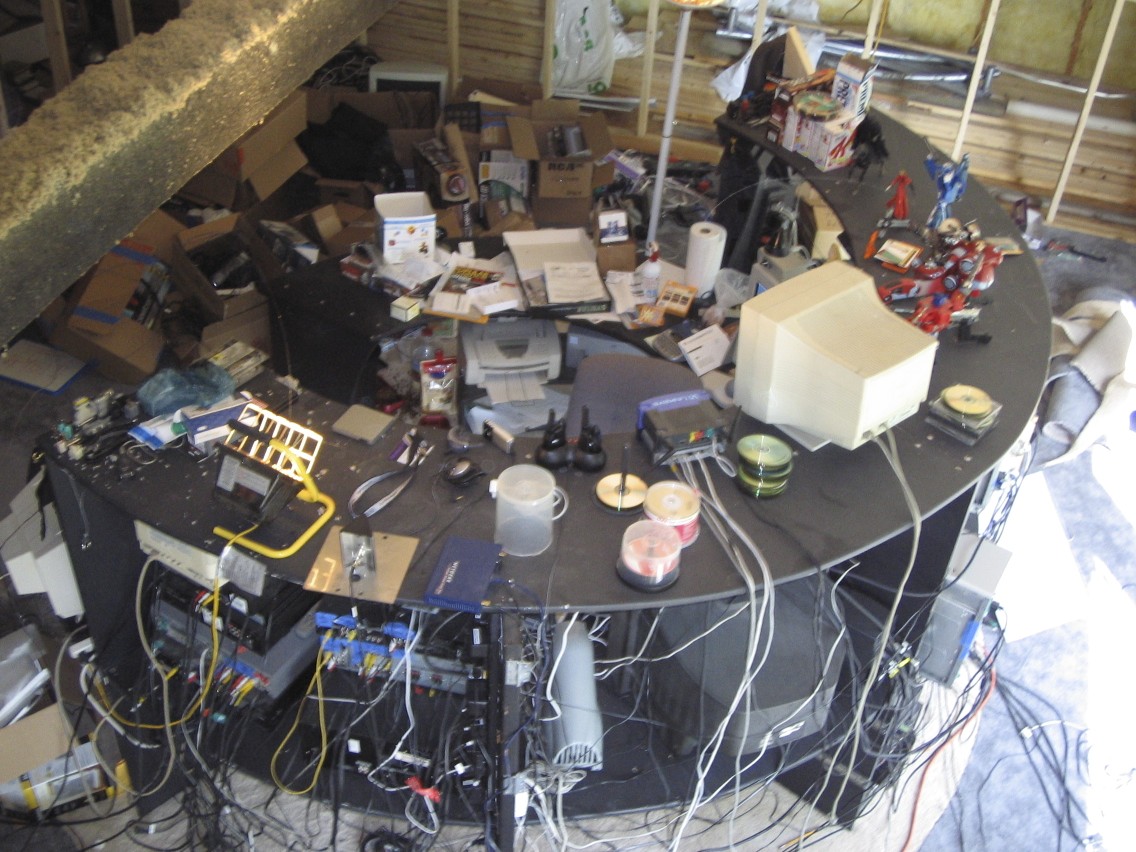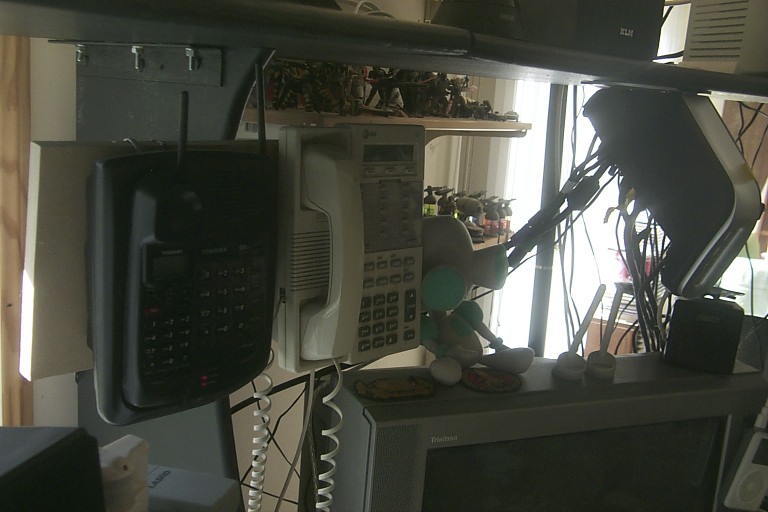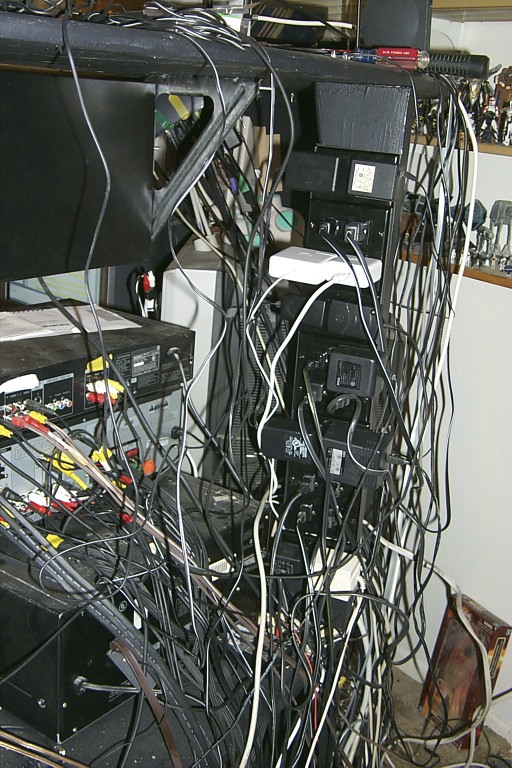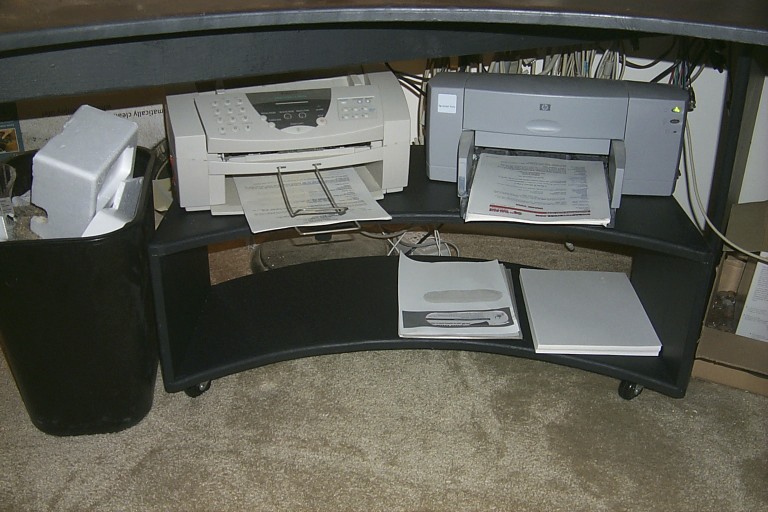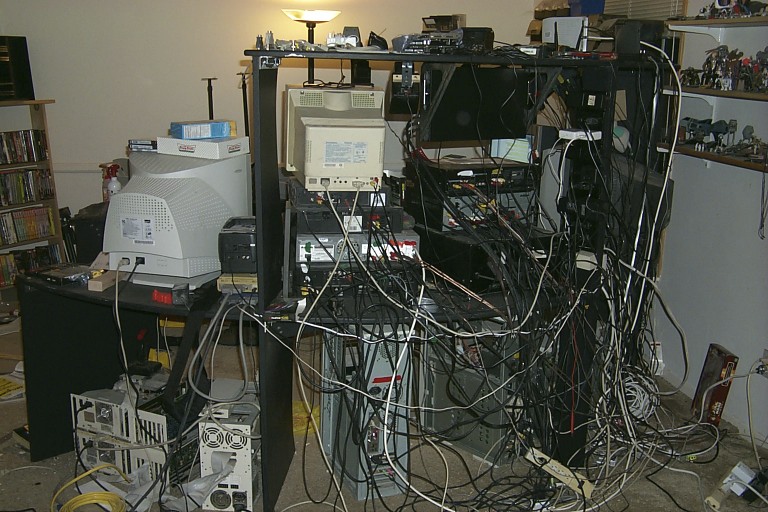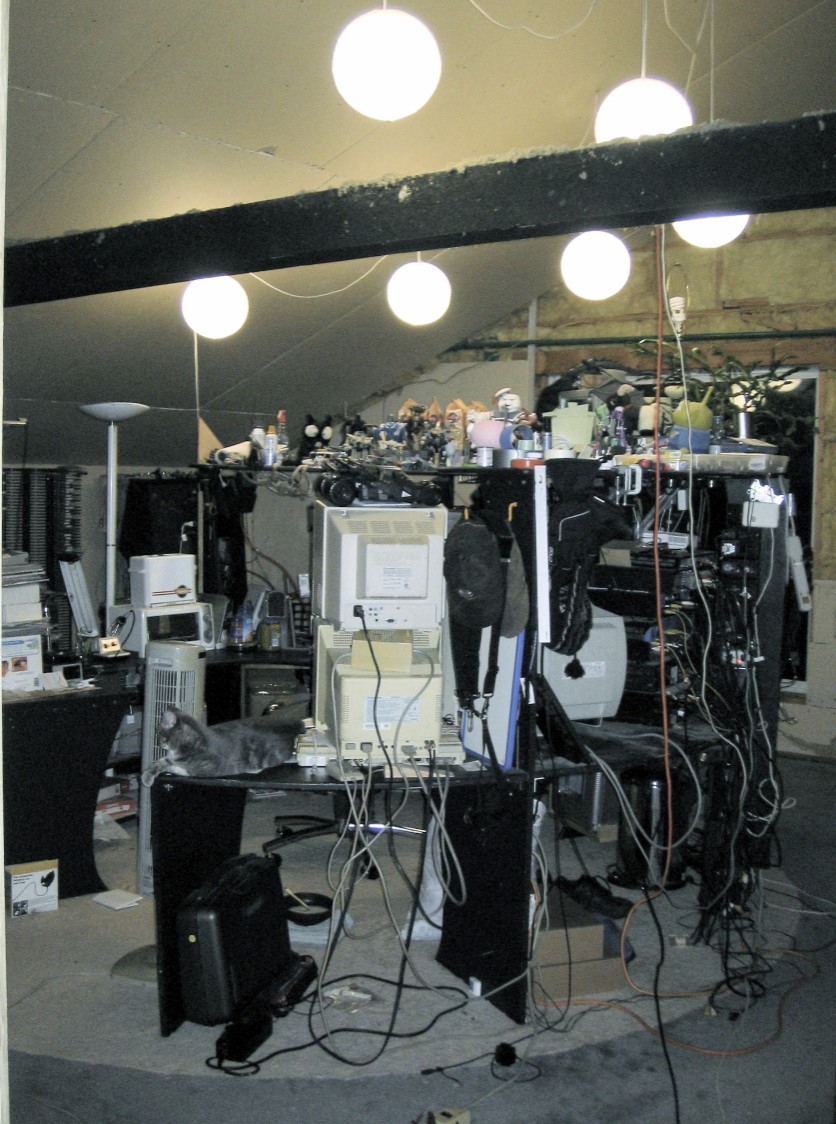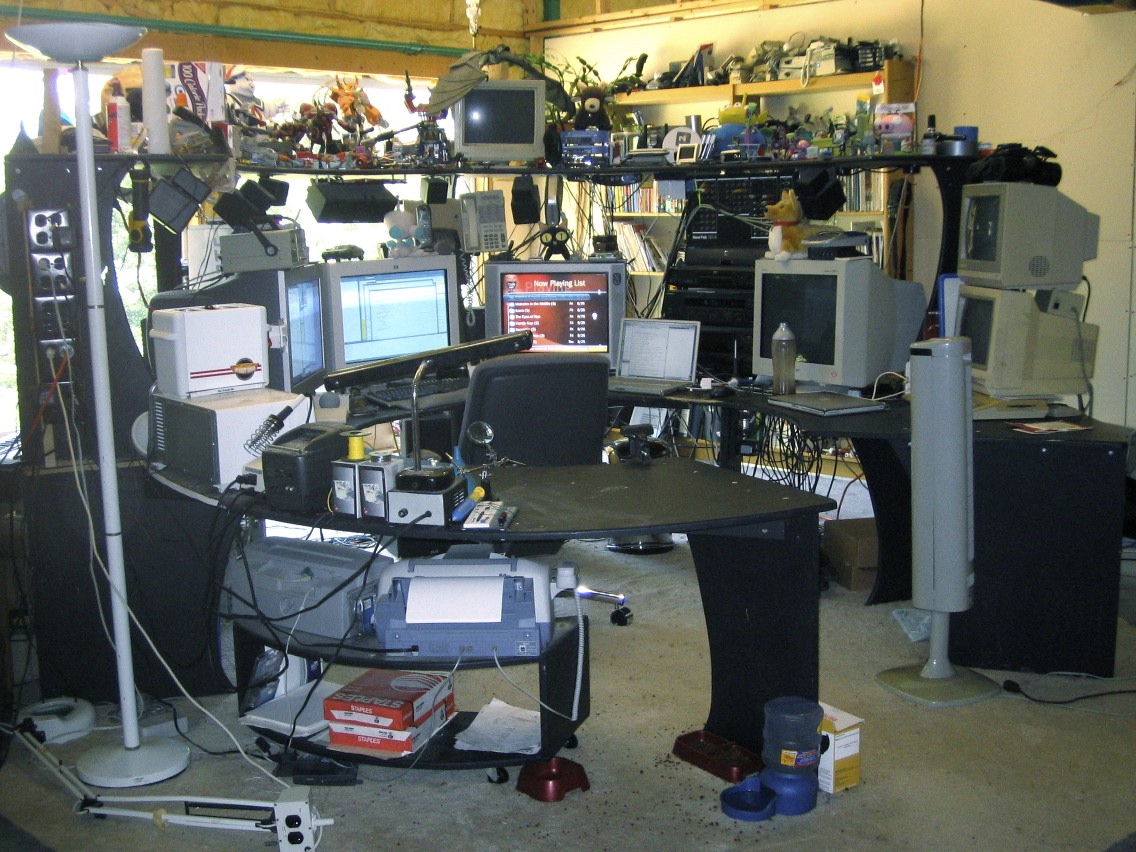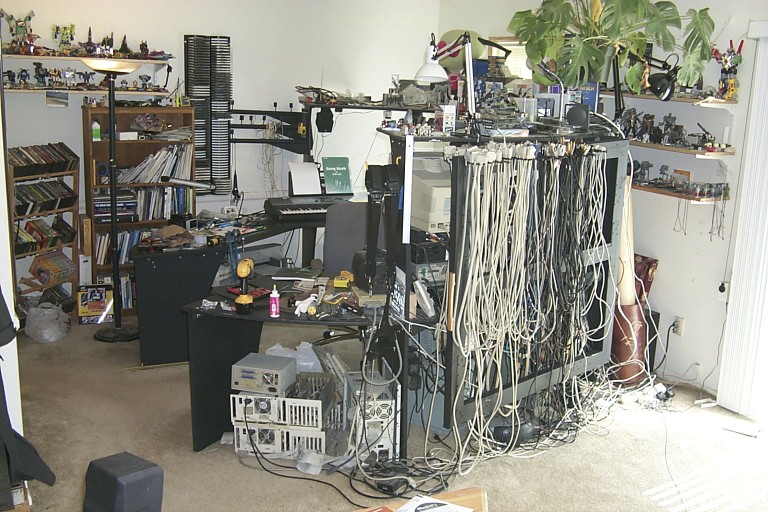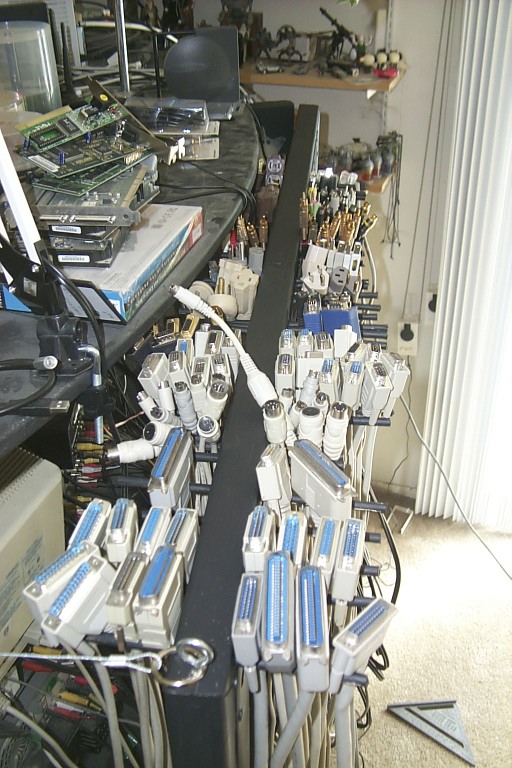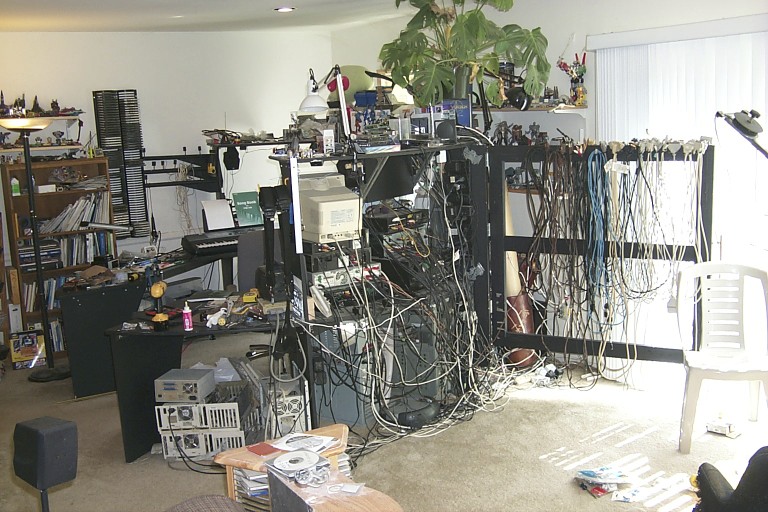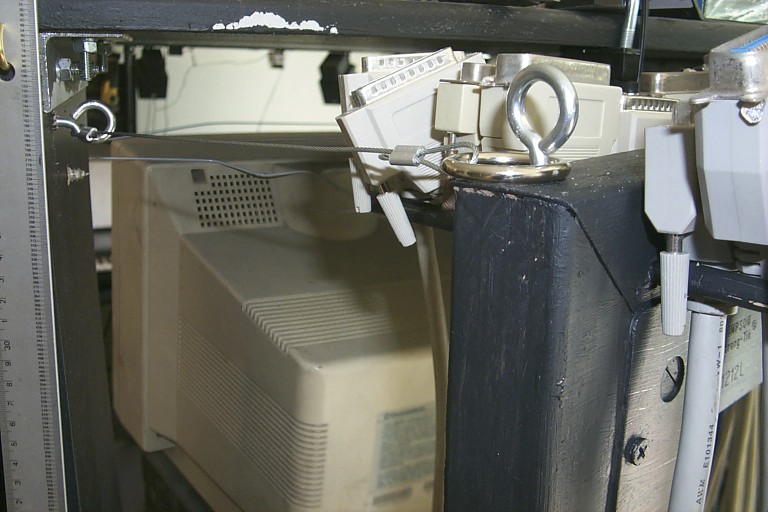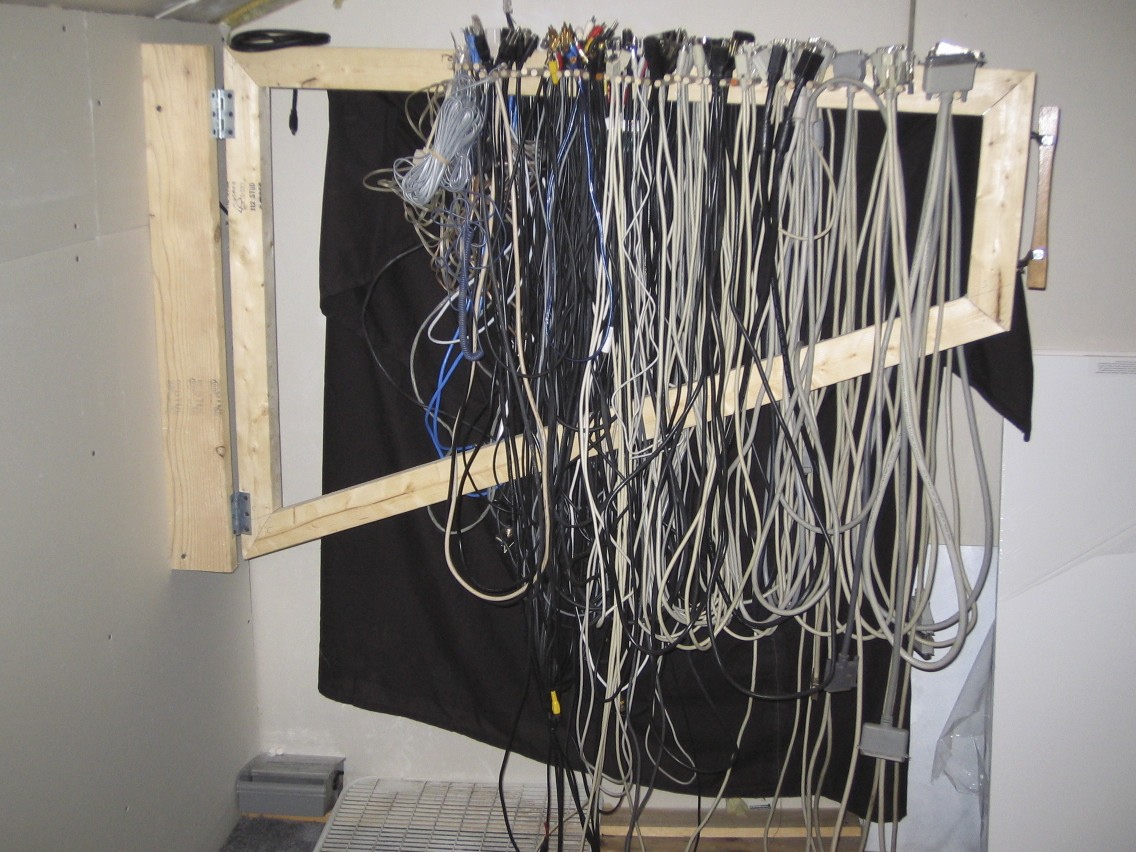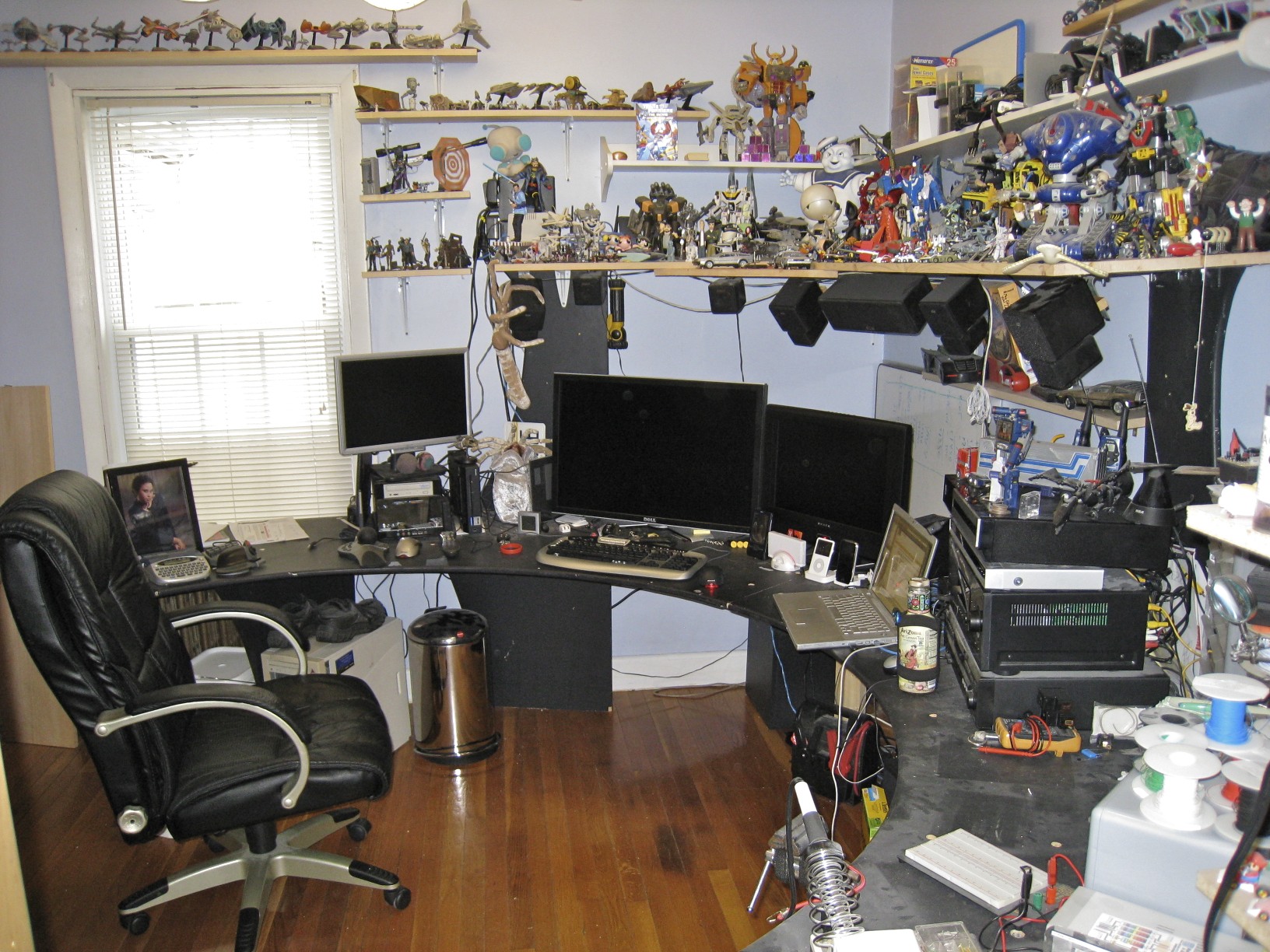
Ring Table
Custom ring-shaped computer desk.
circa 2001 - 2008
I started getting enough computer and electronics stuff together that I wanted to replace the simple eight foot long folding-leg table that I was using as a computer desk with something a bit more purpose-built. To that end, I designed the Ring Table.
Design
The ring table had a six foot inner diameter and a nine foot outer diameter. It swept around about 300 degrees, with a 180 degree upper shelf. Five legs supported the table and the shelf, while two more legs supported the ends of the main surface. The size and shape of the table were specifically chosen to fit a corner in my living room, with one arm of the ring being slightly narrower to allow a person to walk between it and the wall.
Construction
The desk was modeled in Lightwave 3D. I wrote a simple utility to dump the vertices of the desk to a text file that so that they could be plotted on sheets of MDF. My more skilled friend did much of the core construction, including cutting the MDF and designing some L brackets to secure the pieces to each other.
Each piece was bolted together with the metal angle iron pieces to maintain a rigid structure and to make it easy to disassemble for transport, and finally painted a very dark gunmetal grey.
Power
Due to the number of computers and other electronics on the desk, I decided to eschew conventional power strips and build my own. A key design requirement was to be able to easily fit large wall arts and power bricks onto the strip.
I bought a number of outlets and mounted them in a few simple wooden frames. These were mounted to one of the more accessible tall legs of the table, and finally plugged into outlets spanning two circuits. The vast majority of the devices were low, so I wasn't concerned about overloading anything. Critical hardware was plugged into UPSs to ensure uninterrupted power.
Printer Stand
Soon after the table was up, I designed and built a small printer stand. This was primary to ensure that the rapidly moving print head wouldn't shake the entire table as it printed. The curve of the stand matches the curve of the table itself. It was also constructed of MDF, screwed together, and the edges routed. It was painted the same color as the main table, and casters were added to the bottom to make it easier to move around.
Cable Rack
The next addition was a cable rack. I had a cabinet full of various cables that was such a tangled mess that I could never find the cable I was looking for. I built a simple wooden frame from 1x4 lumber, and ran dowels through holes in the top member. Pair of dowels acted as pins to hold the ends of the cables in place. Cables simply hung from the rack, with their connectors facing up for easy identification and removal. I built a simple cable-based latch to keep the rack closed when not in use.
When I later moved, I removed the rack and built a new one that was mounted on the wall instead. Black cloth and a Trigun wall scroll was used to cover the rack to make it look a little less cluttered.
Shelf-as-Desk
I later moved to a much smaller place, and couldn't set up the entire desk. I was able to use the top shelf of the table as a desk in and of itself. I had to drill new holes in the shelf so that I could use original legs, but it worked well enough for the year and a half I was there. Since the shelf is thinner than the main desk, this table had a wider diameter than the original design. I also used some unpainted wood to create a temporary top shelf.
Legacy
I moved again more and was able to just barely fit the full table in a room, but it completely used up more than half of the room. I finally decided that the table had outlived its purpose. My large CRTs have been replaced with larger but lighter LCDs, the desktop computers are all laptops or mini computers now.
I switched to an L-shaped glass desk for a while, and when that was too constrained I switched again to a configurable IKEA Gallant arrangement. I sort of re-created the ring table in a U-like form, with the computers in front of me and to the right while an electronics station sits on a separate, nearby table to the left. It all works well and fits in the space. I got a motorized standing desk frame for when I feel like standing instead of sitting.
The cable rack was replaced with a narrow IKEA dresser, with most of the old and excess cables auctioned off in lots on eBay. Power was reduced to five UPS units and the odd power strips stashed under the back of the desk, ensuring everything important has enough battery backup.
The ring tables pieces were too big and oddly shaped to easily store, and were finally cut up and discarded. The only remaining piece of the table is the printer stand (which is also the only piece that I built myself), and it still sits under my desk fulfilling its original purpose.
